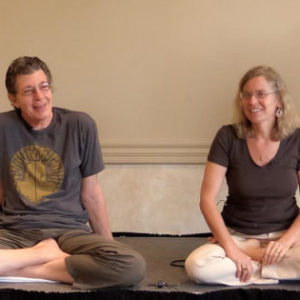ONLINE COURSE CO-TAUGHT BY DR. CLAUDIA WELCH AND DR. ROBERT SVOBODA
Welcome! We’re glad you are here.
Whereas in Lesson 4 we learned how the flow of the physical channels nourishes the tissues of the body, in this 4.9-hour course, we learn what the channel system of the mind might look like, how it is nourished, how disorders could arise, and how we might address those disorders. We also look at other ways of visualizing how the mind, body and prāṇa are connected and various concepts related to the mind.
Of particular interest to students already familiar with the learning objectives for this lesson, might be the insights and discussion around the discussion on manovāhasrotas. While based entirely in the classics, this approach was not taught in moderns schools–as far as we know– before Dr. Welch explored the connection between the discussion of the 10 great vessels mentioned in Āyurvedic classics, with the discussion of them in Tantric classics, sometime in 2005. Practitioners of Āyurveda have varied approaches and understanding about the treatment of the mind. The resulting ramifications of the approach explored in this lesson, we have found hold great healing potential.
Regarding this particular course, you should know it is one excerpted lesson of our Foundations of Āyurveda Part II course. We are offering each lesson of that course as a stand-alone lesson–like this one–so that people can explore just one topic of interest but, if it seems a little out of context standing alone, it is because it is indeed out of context. But we feel the information presented will be valuable nonetheless.
If you would like more information on this course than what you’ll find on this page, whether it is approved for NAMA credits, etc., kindly peruse the home page–including the FAQs– for Foundations of Āyurveda Part II.
Textbooks: Dr. Vasant Lad’s Textbook of Ayurveda, Volume 1: Fundamental Principles of Ayurveda and Textbook of Ayurveda, Volume 2, A Complete Guide to Clinical Assessment, You can go through this course without either text, relying only on our lectures and handouts, but throughout our lessons we recommended readings from one or the other of these books, to enhance the information.




Reviews
There are no reviews yet.